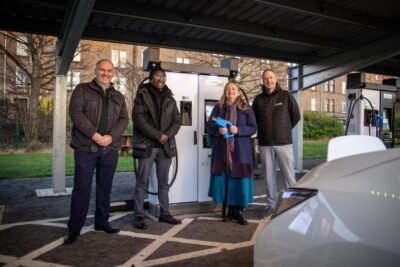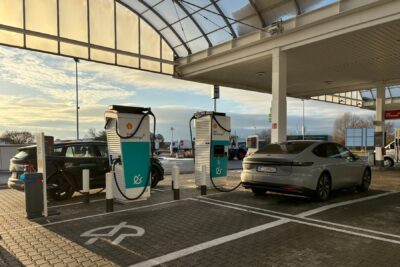“EV charging infrastructure: quo vadis? ChargeUp Europe’s State of the Industry” – Lucie Mattera from ChargeUp Europe
Despite the widespread perception that public EV charging infrastructure is lagging, the latest data tells a different story. “If I had a euro for every time a policymaker told me there aren’t enough charge points, I’d have paid off my mortgage,” said Lucie Mattera during her electrive LIVE presentation. As Secretary General of ChargeUp Europe, Mattera used the platform to dispel myths and present the organisation’s 2025 State of the Industry report—an in-depth snapshot of trends, deployment, and regulatory gaps in Europe’s charging landscape.
According to the report, the number of public charging points in the EU rose to approximately 850,000 in 2024, with a notable surge in DC and high-power chargers. Mattera cited a key benchmark from the Alternative Fuels Infrastructure Regulation (AFIR), which mandates a minimum of 1.3 kW per battery electric vehicle (BEV). “The market delivered 5.7 kW per BEV in 2024 – four times the required level,” she said. Yet misconceptions about slow deployment persist, undermining the industry’s achievements.
While current BEV uptake has slowed slightly, long-term forecasts remain robust. EVs currently account for about 4% of the EU vehicle fleet, but this is expected to grow to 30%—around 80 million vehicles—by 2035. Mattera highlighted corporate fleets as a major area for improvement, noting that their electrification lags behind private vehicle uptake. “In Germany alone, matching private electrification rates would add five million BEVs to the roads,” she said.
User experience remains central to the sector’s priorities. Most drivers still prefer to pay via mobility service provider contracts, though AFIR mandates additional payment options. Plug & Charge and Autocharge are generating interest, but uptake is still limited. “There’s curiosity, but also hesitation among our members,” Mattera observed.
On the heavy-duty vehicle front, the sector is preparing for rapid growth. From just 25,000 electric trucks today, the numbers are projected to hit one million by 2035. Battery electric vehicles are seen as the primary solution, with two-thirds of ChargeUp Europe members preferring fast charging and combined dispenser systems.
The European grid is ready for electrification
Mattera also addressed energy integration, stressing that EVs will not overwhelm Europe’s grid. “By 2035, EVs will account for just 4% of electricity demand,” she said. Smart charging and off-peak load shifting offer substantial cost and efficiency benefits. She cited case studies where off-peak consumption rose from 35% to 80%, saving users €120 annually.
EVs also contribute to Europe’s energy security. “In 2023, EVs displaced 66 million barrels of oil, saving the EU €5 billion,” Mattera reported. She urged policymakers to recognise this geopolitical benefit, particularly as EU carmakers face competitive pressure.
Looking ahead, Mattera expects price transparency to become a key focus of future regulatory reviews, especially in countries like Germany, the Netherlands, and Finland. AFIR is due for revision in 2026, but preparatory work is already underway.
Asked about her advice to policymakers, Mattera was clear: “Base your decisions on evidence. We’re making critical choices now that will shape the industry for decades.”





0 Comments